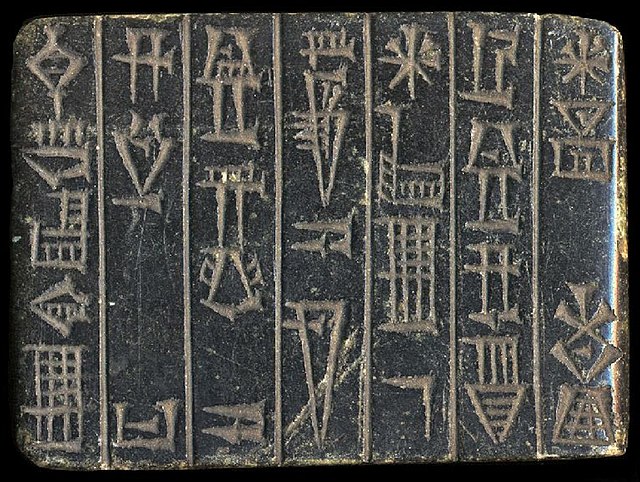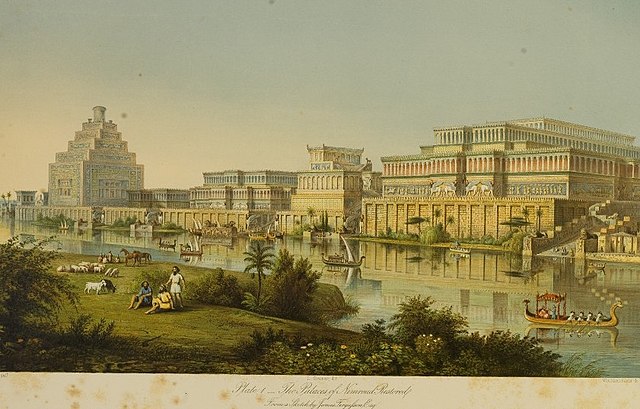Anzû, also known as dZû and Imdugud, is a monster in several Mesopotamian religions. He was conceived by the pure waters of the Abzu and the wide Earth, or as son of Siris. Anzû was depicted as a massive bird who can breathe fire and water, although Anzû is alternately depicted as a lion-headed eagle.
Alabaster votive relief of Ur-Nanshe, king of Lagash, showing Anzû as a lion-headed eagle in a Master of Animals motif, ca. 2550–2500 BC; found at Tell Telloh the ancient city of Girsu, (Louvre)
Inscribed head of a mace with Imdugud (Anzu) and Enannatum, the British Museum, London.
Frieze of Imdugud (Anzu) grasping a pair of deer, from Tell al-'Ubaid.
The Anzû, symbol of Lagash, at the time of Entemena.
Ninurta (Sumerian: 𒀭𒊩𒌆𒅁: DNIN.URTA, possible meaning "Lord [of] Barley"), also known as Ninĝirsu (Sumerian: 𒀭𒎏𒄈𒋢: DNIN.ĜIR2.SU, meaning "Lord [of] Girsu"), is an ancient Mesopotamian god associated with farming, healing, hunting, law, scribes, and war who was first worshipped in early Sumer. In the earliest records, he is a god of agriculture and healing, who cures humans of sicknesses and releases them from the power of demons. In later times, as Mesopotamia grew more militarized, he became a warrior deity, though he retained many of his earlier agricultural attributes. He was regarded as the son of the chief god Enlil and his main cult center in Sumer was the Eshumesha temple in Nippur. Ninĝirsu was honored by King Gudea of Lagash (ruled 2144–2124 BC), who rebuilt Ninĝirsu's temple in Lagash. Later, Ninurta became beloved by the Assyrians as a formidable warrior. The Assyrian king Ashurnasirpal II (ruled 883–859 BC) built a massive temple for him at Kalhu, which became his most important cult center from then on.

Gudea dedication tablet to God Ningirsu: "For Ningirsu, Enlil's mighty warrior, his Master; Gudea, ensi of Lagash"
The Gudea cylinders, dating to c. 2125 BC, describe how King Gudea of Lagash rebuilt the temple of Ninĝirsu in Lagash as the result of a dream in which he was instructed to do so
1853 restoration of what the city of Kalhu, Ninurta's main cult center in the Assyrian Empire, might have originally looked like, based on the excavations of the British archaeologist Austen Henry Layard there in the 1840s
Male figure in an Assyrian winged sun emblem from the Northwest Palace at Kalhu; some authors have speculated that this figure may be Ninurta, but most scholars reject this assertion as unfounded








